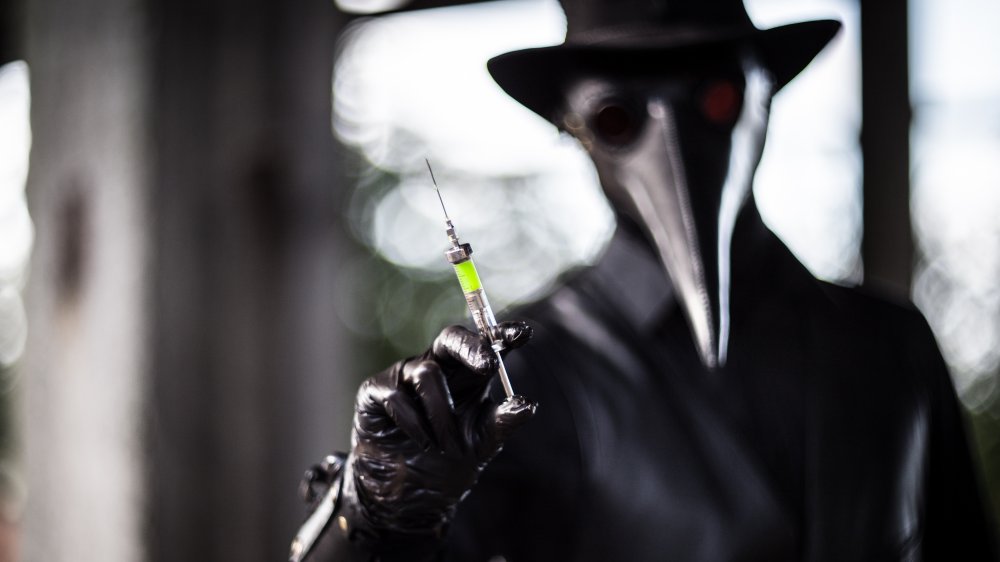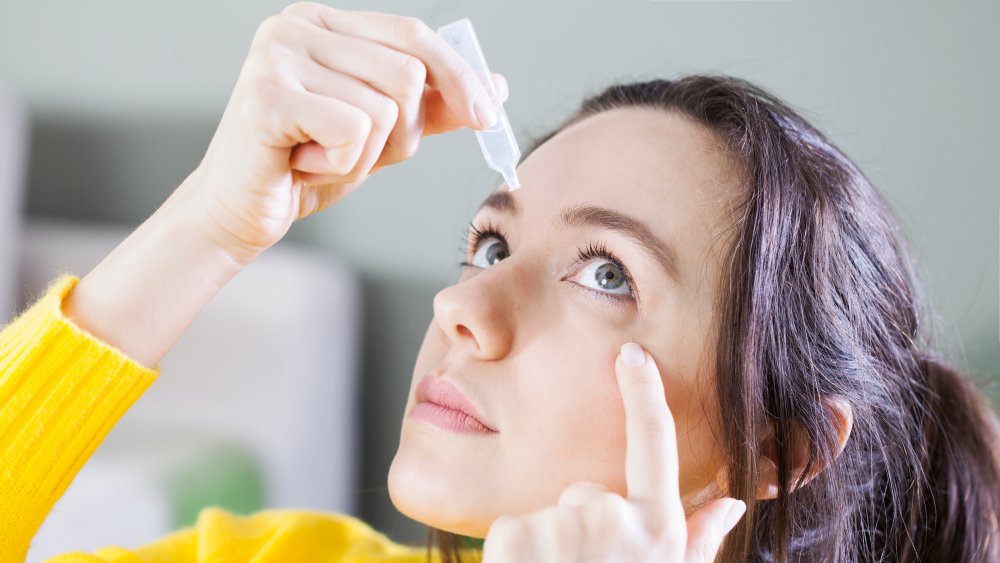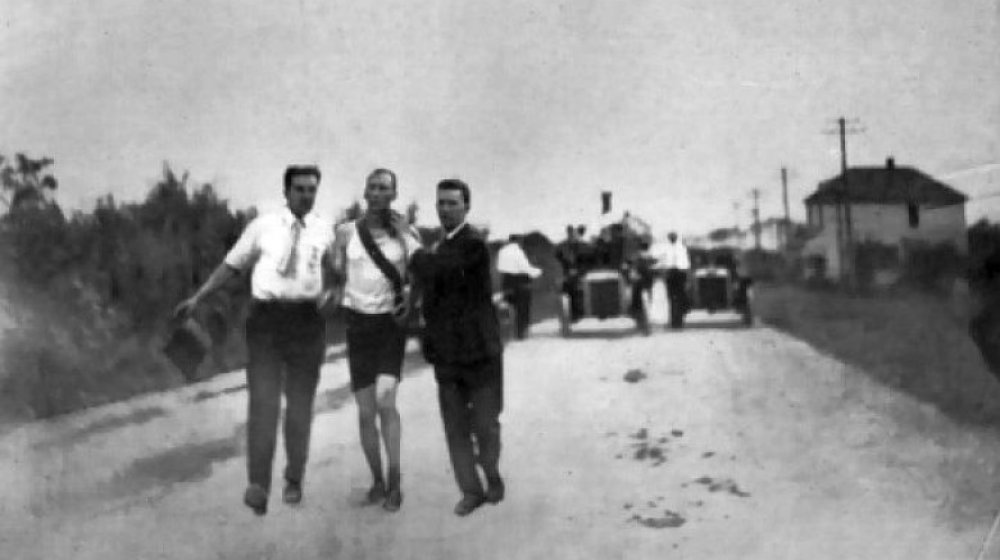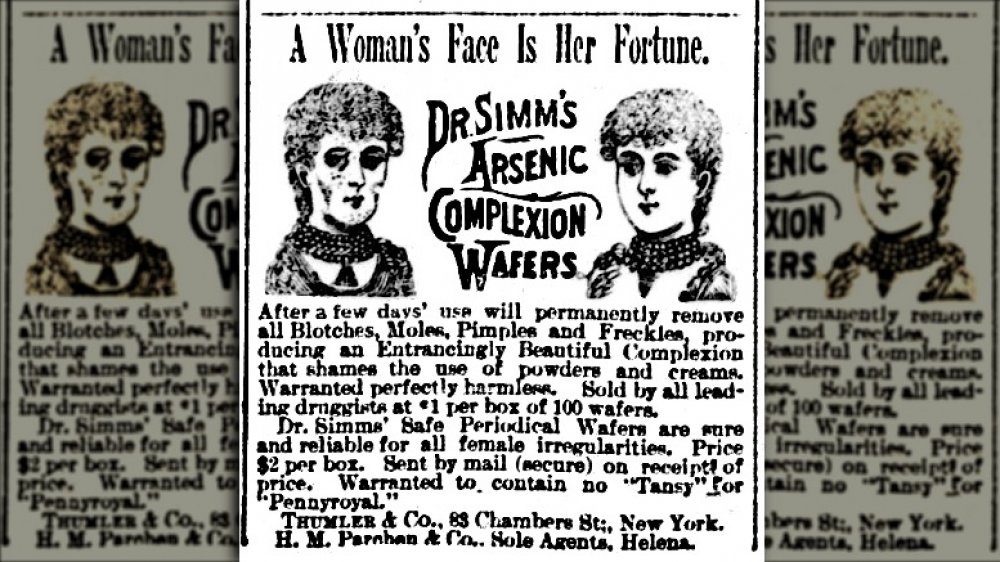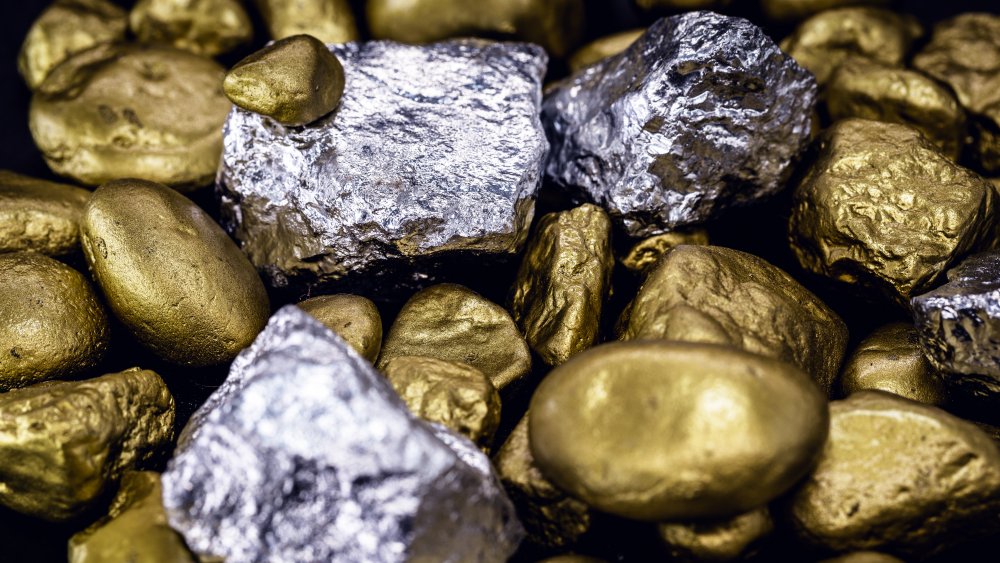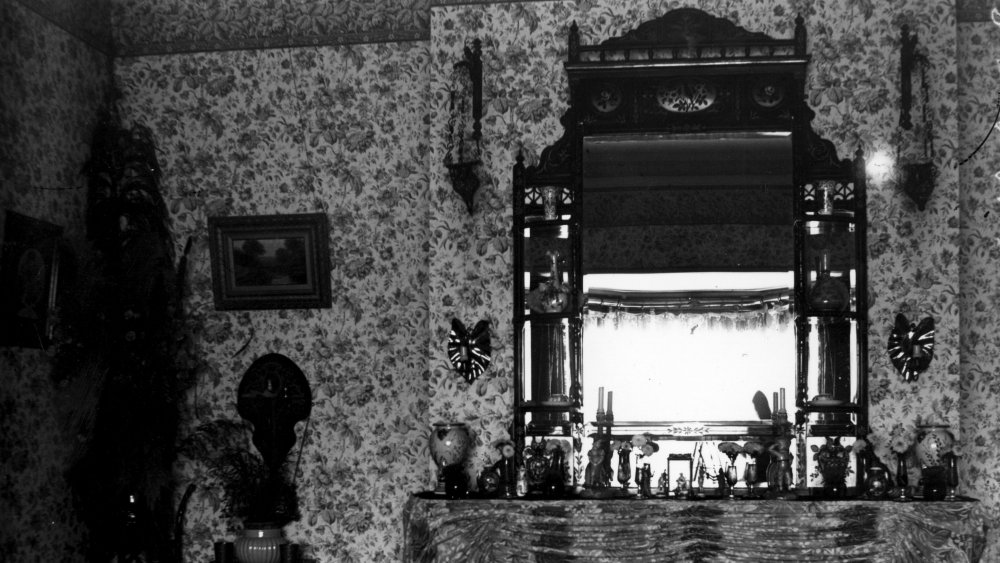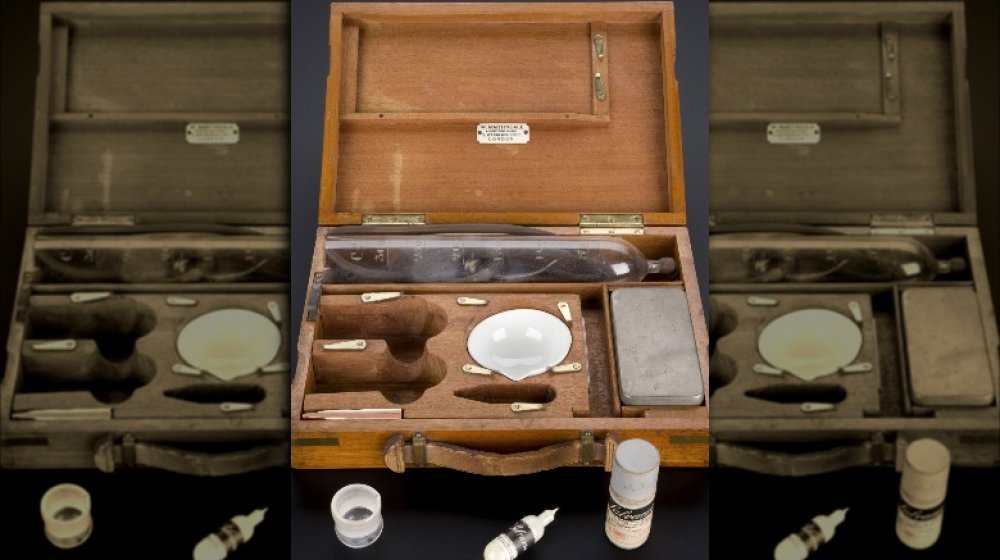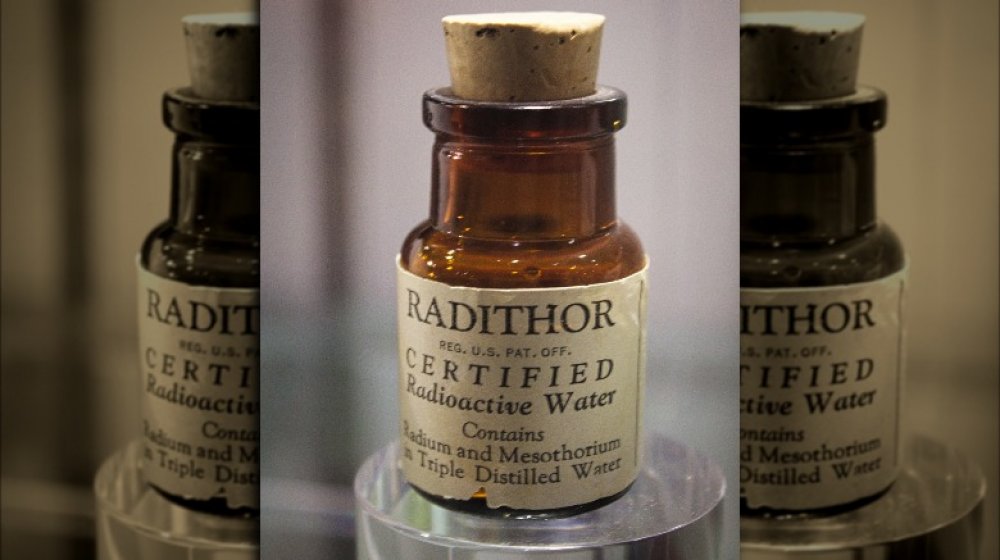Bizarre Historical Uses For Poison
Humans, frankly, can't be trusted. We're forever ruining whatever we get our hands on just to see what happens, whether that's eating endangered animals like Charles Darwin or killing people just to watch them die. Poison, of course, has been a favored method of assassination and murder for millennia because it's just so dang convenient — you can kill someone without even being present in the room.
We've figured out how to extract poisons from mushrooms, wildflowers, frightened fish and frogs, and even the earth itself. Natural ways to kill everyone around you not enough? We've concentrated 'em into even deadlier forms, created spin-offs, and even engineered poisons in the lab. Truly, the human fascination with mortality — our own and others' — knows no bounds. We just love playing with stuff that could kill us in seconds.
But while we're a wanton and cruel species, we're also clever, and over those same millennia, humans have also used deadly poisons for a heap of other reasons, from manufacturing to medicine. Because clearly, it's a great idea to take something that can kill on contact and use it throughout your home and even on your skin...
Lead was used for millennia as foundation and concealer
Got a zit you want to cover up? Maybe some pock marks from a bad bout of smallpox? Or do you just want to make your skin look smooth and porcelain-like? Just smear some lead on yourself! Because beauty is totally worth abdominal cramps, memory loss, and eventual kidney failure.
As History of Cosmetics notes, the ancient Romans considered smooth, white skin to be a sign of high status and wealth. So naturally, everyone wanted to fake it — and since lead makes a lovely, opaque white pigment, as Natural Pigments notes, it became the first foundation and concealer as early as 400 BCE. In The Classical World, scholar Kelly Olson notes that ingredients like lead, vinegar, and animal fat were relatively cheap and plentiful in ancient times, so even poorer women could afford to smear themselves with lead makeup.
Later on, lead makeup would become the hallmark of the rich and famous — even Queen Elizabeth wore it to look attractively pale and probably also to cover up facial scarring, as National Geographic points out. Unfortunately, long-term lead exposure leads to abdominal pain, irritability and fatigue, memory loss, vomiting, numbness and tingling in the hands and feet, and maybe a seizure or two. Eventually, your kidneys shut down, and you die, leaving a very attractive and already pale corpse.
Wolfsbane was used to treat colds
Aconite, also known as monkshood or wolfsbane, is an ancient poison, known to the Greeks, Romans, ancient Chinese, and Indians, as botanist H.S. Puri writes. Stanford University professor Adrienne Mayor notes that many scholars even think aconite was used to assassinate Alexander the Great. As little as a single gram of the plant itself, completely unprocessed, is enough to kill you. Spend a little time making a tincture of the root, and you can kill with just two milligrams.
And what a death: Within minutes, your heart will be beating out of your chest, followed by slowing to nearly nothing. You'll be sweating, nauseated, and numb. If you haven't gone into cardiac arrest yet, Drugs.com notes that within hours, you'll likely die of respiratory paralysis — your lungs simply stop working.
But you know what? If you have a little cough, maybe having your lungs stiffen up isn't such a bad thing! That seems to be what various herbalists have thought over the millennia, as botanist Puri points out. This intensely deadly poison, as noted by Poison.org, has also historically been used to treat the common cold.
In fact, it's still used for that today in homeopathic remedies, as Healthline relates. But given that pretty much any dose, taken from any part of the plant, can be enough to send you to the ER, we'd suggest just stocking up on tissues.
Deadly nightshade was used in eye drops ... and still is today
A type of deadly nightshade and a potent poison, belladonna literally means "beautiful woman" in Italian. No one's really sure if that refers to the plant's lovely flowers and berries, its status as a poison, or the idea that women were most likely to use poisons. But maybe the name also comes from the Italian Renaissance practice of using belladonna eye drops to change the size of your pupils, giving you a trendy "starry-eyed" look, as Healthline relates.
Granted, as the Encyclopedia of Toxicology points out, belladonna also has a tendency to stiffen your muscles, cause short-term memory loss and confusion, disorientation, and death when your heart gets paralyzed. But surely just dropping a little poisonous paralytic agent into your eyes to make the irises dilate, as noted in the book Synaptic Transmission, can't hurt, right?
Right! It wasn't just Renaissance Italians who wanted those hugely expanded pupils — optometrists today use dilating drops made with deadly nightshade, as Medical News Today points out.
Strychnine was a performance-enhancing drug
Feeling a little run-down? Why not try a dose of one of the world's most deadly poisons? A little strychnine can make you feel perky, even to the point of being antsy and desperate to move. That's because, as the CDC points out, strychnine interferes with your body's nerve signals. Your nerves start firing crazily, making your muscles jerk, as io9 relates. At a low dose, it makes you twitchy and want to be moving around to ease the spasms. At a high dose, you go into painful contortions before dropping dead of suffocation as your lungs seize up — typically fully conscious and aware of what's happening to you.
So clearly, as io9 points out, all that twitching and restlessness makes strychnine the perfect performance-enhancing drug! After all, if you're worried your muscles are going to snap out of your body if you don't keep moving, you're likely to run a little faster.
As doping expert Mark Johnson details, strychnine made the perfect little helper for endurance runners — something put into practice in the 1904 Olympics, of all places. Marathon gold medalist Thomas Hicks used a cocktail of brandy and strychnine to make it across the finish line — eventually being declared the winner after it came out that another American did a chunk of the race in a car, as Smithsonian Magazine notes.
Opium was used to help with teething
Baby won't stop crying? Whether it's due to colic, teething, or just fussiness, our ancestors had an easy way to get some peace and quiet — just dose Junior with some opium. As Dr. Michael Obladen relates, various extracts from the poppy plant have been used for millennia to sedate babies. From simply rubbing poppy juice on their gums to buying expensive over-the-counter treatments, opium was an exhausted parent's first line of defense.
And it wasn't just Galen and the ancient Greeks doing it, either. Opium, laudanum, and morphine, usually mixed with alcohol, were popular kids' medicines from the 1700s on — one English chemist alone, according to Small Acorns, one sold more than six and a half gallons of the most popular formula in one week. And even campaigns for stricter medical regulation didn't end the trend. As the Wellcome Collection details, morphine wasn't removed from cough syrups and teething formulas for kids in the US until 1915.
Eating arsenic was considered a good idea
One of the most popular poisons of all time — both in real life and in fictional accounts — is surely arsenic. We've all heard of this odorless, flavorless poison that can kill with just a pinch in your dinner. You'll probably feel a little off, as Healthline notes, with some tummy troubles: upset stomach, abdominal cramps, diarrhea. You might be a little dizzy as your fingers start to tingle and your heart rate gets erratic. And then, just after that lovely dinner, you die as your red blood cells self-destruct, per MedicineNet.
So intentionally chowing down on arsenic seems like a fast way to take yourself out of the gene pool. But in the Victorian era and even into the 20th century, arsenic tablets and wafers were considered a great way to clear your skin. Even the Sears catalog listed "arsenic complexion wafers" for sale, as Mental Floss points out.
The National Museum of American History lists all the myriad benefits of "safe" arsenic wafers, including treating hay fever, headache, and malaria, not to mention "lack luster eyes, low spirits, want of vitality," and constipation. If you could just avoid the whole death by vomiting and cardiac shock thing, what a miracle cure!
Cyanide is used to mine gold
Bitter almond — what a delicious flavor! Of course, it might be the last thing you ever taste if it's coming from a compound of cyanide slipped into your food. Extracted from the pits of peaches, apricots, and other stone fruits, cyanide can be used to poison folks in both gas and crystal form, inhaled or dissolved in a drink or sprinkled over food. Once ingested, according to the CDC, it causes dizziness, nausea, convulsions, and eventually death through lowering the heart rate and damaging the lungs — or outright respiratory failure.
Despite its horrifying tendency to kill on contact, though, cyanide has been used for dozens of industrial applications over the centuries. Even Kodak used to use it as part of one of their photographic processing solutions. Of course, as the Journal of Chemical Education notes, this often led to frustrating little incidents of accidental self-poisoning.
But tiny amounts of cyanide in darkrooms is nothing compared to the sheer volume of deadly poison used to produce one of mankind's most lasting obsessions: gold. Since the late 1800s, cyanide has been used to extract gold from piles of rock – and is still used for that today. The official Cyanide Code admits that pools of cyanide-laced water are stored at many gold mines and, as highlighted by the Pittsburgh Post-Gazette, have sometimes been used to poison local wildlife ... or perhaps a human victim or two.
Why shave when you can use poison instead?
Don't feel like shaving? Just smear poison on your face, legs, or underarms and let nature take its course! According to MedicineNet, thallium is a heavy metal element that causes acute stomach pains, tingling in the hands and feet, and eventually death — in other words, it's a serious poison. However, one of its symptoms is hair loss. In fact, it causes such rapid and severe hair loss that this is one of the diagnostic checks for thallium poisoning, according to Case Reports in Emergency Medicine.
Why waste a perfectly good side effect to a deadly poison? For centuries, "clever" humans have tried to find the exact right dose of thallium to produce smooth, silky skin without actual death.
As Bustle points out, we didn't even have the excuse of not knowing thallium was poisonous — Agatha Christie used it in her novels, after all. As late as 1931, companies were still manufacturing toxic hair-removal creams, leading to a class-action lawsuit against the manufacturers of one, Koremlu, in the 1930s, as Smithsonian Magazine recounts.
Victorian wallpaper was poisonous
Being on trend in the Victorian era could kill you. Scheele's Green, a vibrant green shade, was hugely popular in wallpaper, curtains, and other home décor, as The Paris Review relates. It also happened to be made of an incredibly unstable arsenic compound ... which could get into the air and kill you.
Doctors in the mid-1800s were completely baffled as to why some households seemed to be suffering from mysterious headaches, nausea, and insomnia. Children in the homes struggled to breathe. And yet there was no sign of contamination in the water supply, as Smithsonian Magazine points out. Eventually, a pair of determined doctors, Henry Lethby and Thomas Orton, wised up, as Ancient Origins relates. Orton witnessed the dangers of green wallpaper firsthand, writing, "In my own neighborhood, a person, in cleaning her house, gently brushed over the green paper on the walls. In an hour or two she and her husband were seized with pains in the eyes and head, irritation about the upper lip and nostrils, and a sense of suffocation so that they could not sleep all night."
Yet even knowing all this, designers kept on making poison home furnishings. The hottest interior designer of the day, William Morris, kept denying the dangers of arsenical green. According to Nature, his company didn't come out with an arsenic-free wallpaper for more than 20 years after the revelation that wallpaper was killing kids.
Mercury was used to treat syphilis
"Ten minutes with Venus and a lifetime with Mercury" — that old saying was a cheeky way to warn young men of the dangers of sleeping around. After all, playing fast and loose with the goddess of love could earn you a nice STD — and back in the day, the go-to treatment for that was toxic mercury.
While mercury has been used for a number of applications over the millennia, a particularly horrifying practice was its use in treating certain private ailments. According to The Pharmaceutical Journal, mercury ointments, pills, and vapors were frequently used to treat syphilis, a disfiguring and potentially deadly STD, per the Mayo Clinic.
Rubbing a compound that causes insanity and death onto open sores may seem like an odd way to treat a disease that also causes insanity and death, but there you have it. As an article in the journal Sexually Transmitted Infections points out, mercury was a popular treatment in the UK and America until the early 20th century.
Even the US military used mercury treatments for errant soldiers and sailors, as one gruesome training film details. According to historian John Frith, mercury was still in use by the military as late as the 1940s.
Arsenic was the world's first blockbuster drug
Now, all that topical mercury — and even the injected version, shot right up the ol' trouser snake — probably didn't do much to cure your case of syphilis. Thankfully, another poison might just do the trick!
In addition to being used in all kinds of commercial applications, arsenic was the world's first "blockbuster" drug: one specifically targeted to treat a disease, way better than any other existing remedies and worth millions, if not billions. That disease? Our old friend syphilis...
According to Smithsonian Magazine, in 1909, researcher Sahachiro Hata tested yet another of German chemist Paul Ehrlich's many arsenic compounds on a syphilis-infected rabbit ... and discovered the rabbit totally free of bacteria the next day. The two swiftly worked to commercialize their find, bringing Salvarsan to market within just a year, as Chemical & Engineering News relates. Historian John Frith, writing in the Journal of Military and Veterans' Health, notes that Salvarsan was called "the arsenic that saved." This was despite the fact that it was hard to administer, didn't work in the deadly end phase of syphilis, and could, you know, kill you via arsenic poisoning.
Radioactive energy drinks were all the rage
In the mid-20th century, anything "atomic" was the bomb. That included radioactive makeup. From skin cream to soap and even condoms, if it could be infused with a dangerous dose of radioactive poisons like thorium, it was.
CNN points out that a whole host of bathroom products were infused with radioactive chemicals well into the 1960s, when we really should have known better. But skin creams and watch dials were only the beginning — radium was slathered on to pretty much anything. Some factory workers even painted their teeth with it as a practical joke on their boyfriends, as the book The Radium Girls relates.
But while trace amounts of radiation surely leached into your skin from your glowing complexion cream, an even better way to poison yourself with style was by chugging radioactive energy drinks. Interesting Engineering notes that Radithor, which was popular in the 1920s, put pep in your step ... mostly by including a toxic dose of radium, as demonstrated by one of the energy drink's biggest fans, Ebenezer Byers. According to Cult of Weird, the rich Manhattan playboy drank three bottles a day for years, eventually building up three times the lethal dose in his bones, having his jaw fall off, and dying of kidney failure.
Lessons from History notes that he was buried in a lead-lined coffin. Just in case.
